On December 17th, “Tristan – Berlin bares teeth” opens to the public.
The exhibition will be unveiled at Berlin's Museum für Naturkunde (Natural History Museum), and is set to run for at least three years.
“This is an amazing moment for the museum,” Prof. Johannes Vogel, museum director, told The Local on Wednesday.
T-Rex specimens “have this funny effect of transforming the perception of museums,” he said, “and this will be no exception.”
One of the world's best preserved examples of a Tyrannosaurus Rex, 'Tristan Otto' is also the first original T-Rex skeletons ever displayed in Europe.
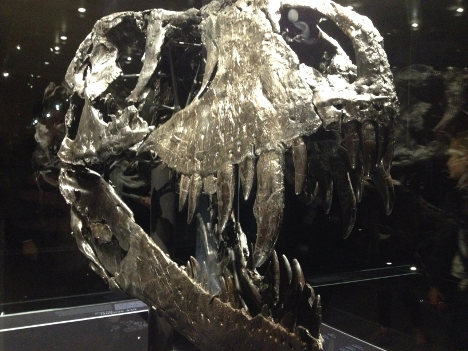 Tristan's original skull weighed around 180kg. Photo: Hannah Butler
Tristan's original skull weighed around 180kg. Photo: Hannah Butler
Tristan is an estimated 66 million years old, and was found in Montana, USA in 2010.
His official owner and sponsor is Niels Nielsen – who was also present for Tristan's introduction to an excited German press crowd.
Berlin is “the perfect place for Tristan,” he said in a statement.
“The Museum für Naturkunde Berlin is one of the world's leading museums with outstanding exhibitions and research, particularly regarding dinosaurs.”
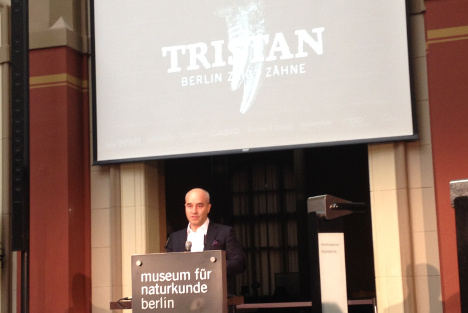 Tristan's sponsor and owner Niels Nielsen spoke to journalists in Berlin on Wednesday. Photo: Hannah Butler
Tristan's sponsor and owner Niels Nielsen spoke to journalists in Berlin on Wednesday. Photo: Hannah Butler
Tristan is a “one-off opportunity for Berlin,” Prof. Vogel added.
“We're a very well known museum in Berlin, and we're much loved in Germany,” he told The Local. “And now I think we are a big time player on the world stage.”
The T-Rex looks set to be a major attraction for tourists and locals alike in the city.
“At the moment we get half a million visitors per year, and if we are lucky, we might double that,” Vogel predicted.
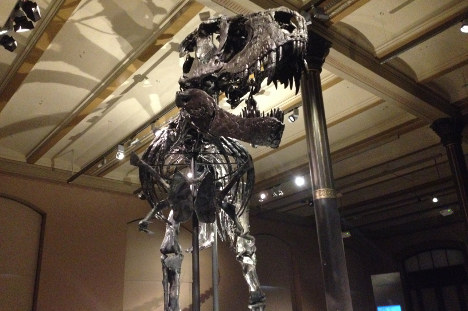 Photo: Hannah Butler
Photo: Hannah Butler
Only 50 T-Rex specimens have ever been discovered – and while experts believe a complete skeleton would have around 300 bones, no full skeletons have ever been found.
Tristan's original skeleton was discovered with 170 bones, making him one of the most well-preserved T-Rexs ever found.
He is set to remain at the museum for at least three years – but Vogel is keen to extend the T Rex's visit,
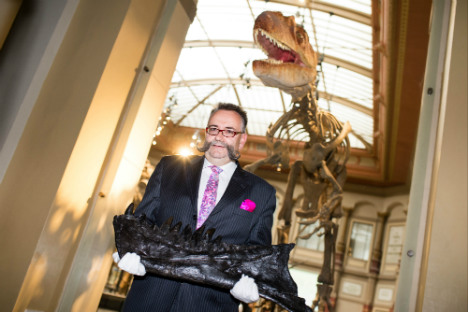 Berlin Natural History Museum Director Johannes Vogel poses with part of Tristan's Jaw in Montana in July, before the dinosaur's transport to Berlin. Photo: DPA
Berlin Natural History Museum Director Johannes Vogel poses with part of Tristan's Jaw in Montana in July, before the dinosaur's transport to Berlin. Photo: DPA
“Nobody knows what's going to happen afterwards,” he told The Local. “But we will do our very best to keep it a little bit longer.”
It's hoped that Tristan will prove useful in upcoming research at the museum – and that the exhibition can grow and develop as cutting-edge research reveals more and more about the dinosaur's life.
You can visit Tristan from Thursday at Berlin's Museum für Naturkunde (U-Bahn and Tram stop Naturkundemuseum).
By Hannah Butler

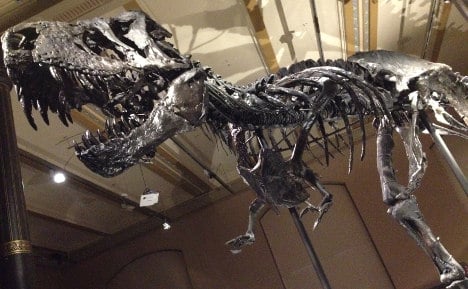

 Please whitelist us to continue reading.
Please whitelist us to continue reading.
Member comments